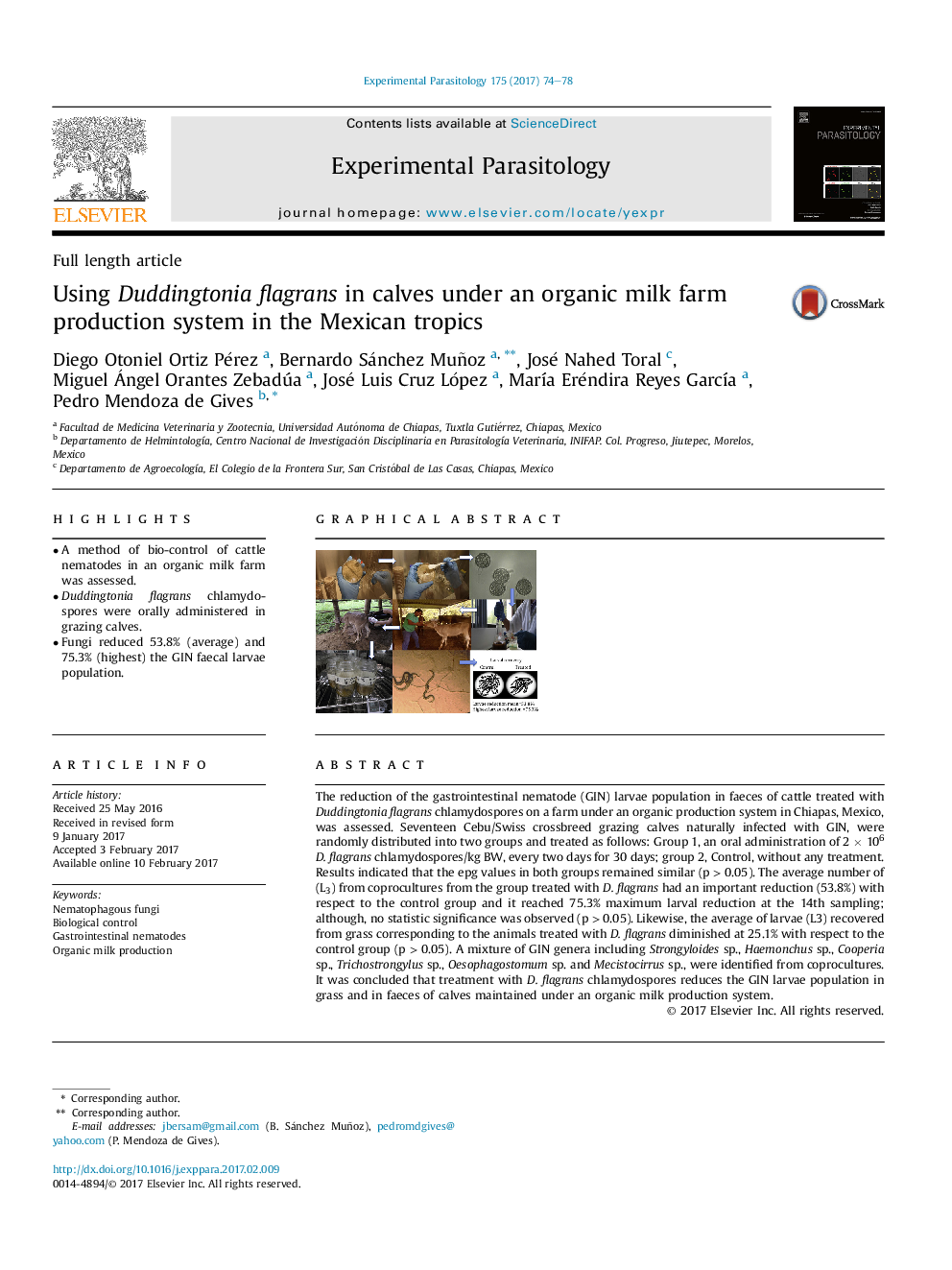| کد مقاله | کد نشریه | سال انتشار | مقاله انگلیسی | نسخه تمام متن |
|---|---|---|---|---|
| 5741143 | 1616990 | 2017 | 5 صفحه PDF | دانلود رایگان |

- A method of bio-control of cattle nematodes in an organic milk farm was assessed.
- Duddingtonia flagrans chlamydospores were orally administered in grazing calves.
- Fungi reduced 53.8% (average) and 75.3% (highest) the GIN faecal larvae population.
The reduction of the gastrointestinal nematode (GIN) larvae population in faeces of cattle treated with Duddingtonia flagrans chlamydospores on a farm under an organic production system in Chiapas, Mexico, was assessed. Seventeen Cebu/Swiss crossbreed grazing calves naturally infected with GIN, were randomly distributed into two groups and treated as follows: Group 1, an oral administration of 2 Ã 106D. flagrans chlamydospores/kg BW, every two days for 30 days; group 2, Control, without any treatment. Results indicated that the epg values in both groups remained similar (p > 0.05). The average number of (L3) from coprocultures from the group treated with D. flagrans had an important reduction (53.8%) with respect to the control group and it reached 75.3% maximum larval reduction at the 14th sampling; although, no statistic significance was observed (p > 0.05). Likewise, the average of larvae (L3) recovered from grass corresponding to the animals treated with D. flagrans diminished at 25.1% with respect to the control group (p > 0.05). A mixture of GIN genera including Strongyloides sp., Haemonchus sp., Cooperia sp., Trichostrongylus sp., Oesophagostomum sp. and Mecistocirrus sp., were identified from coprocultures. It was concluded that treatment with D. flagrans chlamydospores reduces the GIN larvae population in grass and in faeces of calves maintained under an organic milk production system.
390
Journal: Experimental Parasitology - Volume 175, April 2017, Pages 74-78